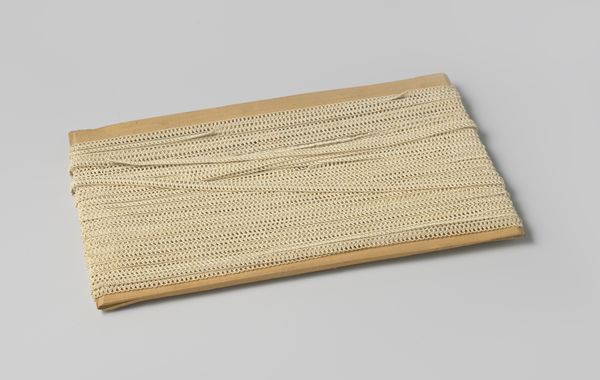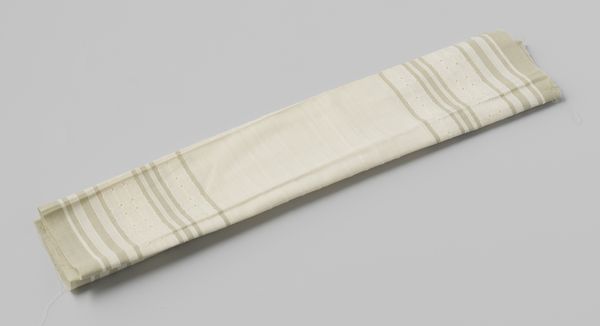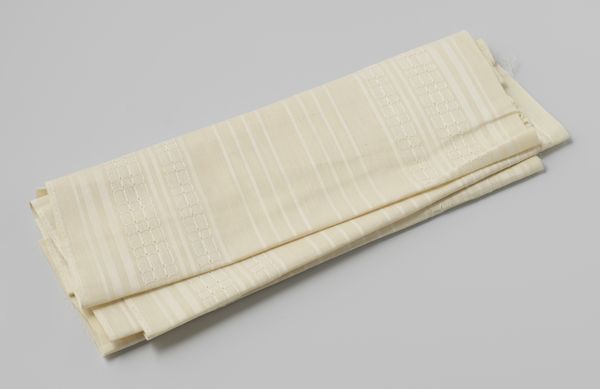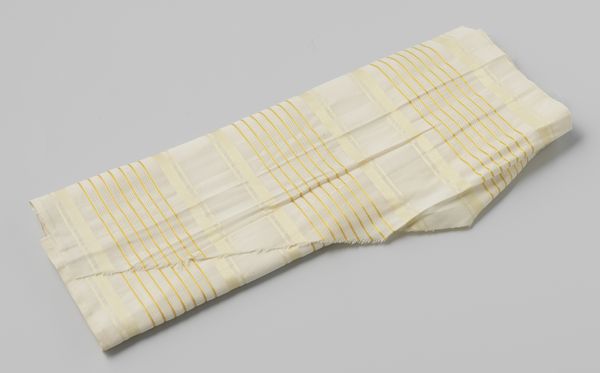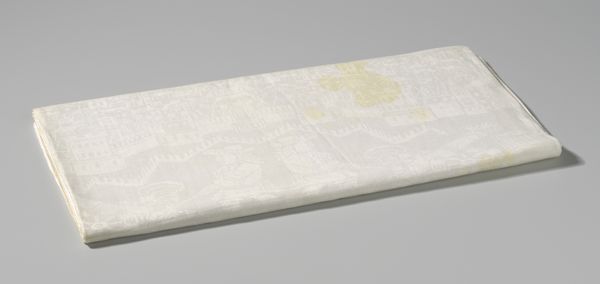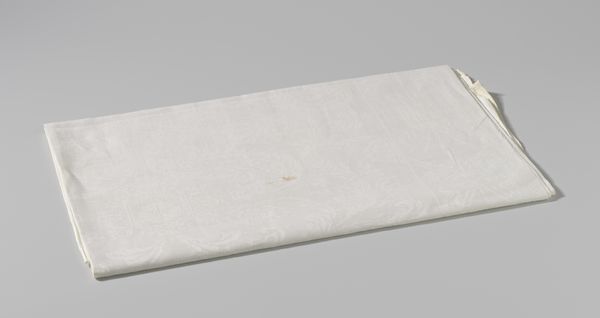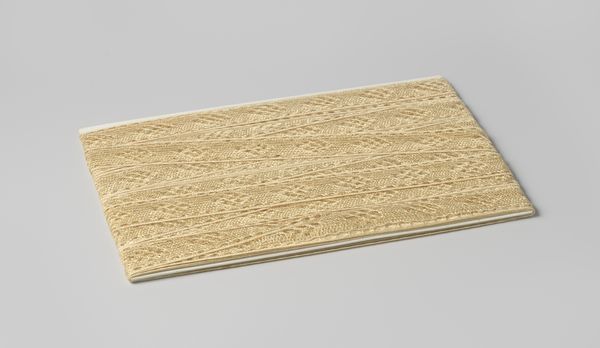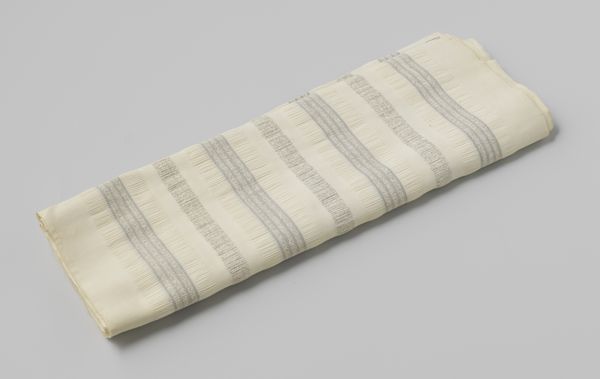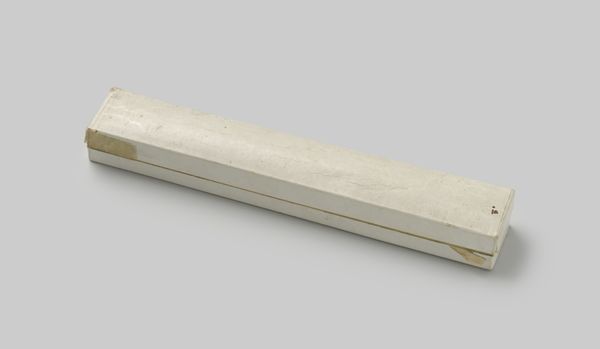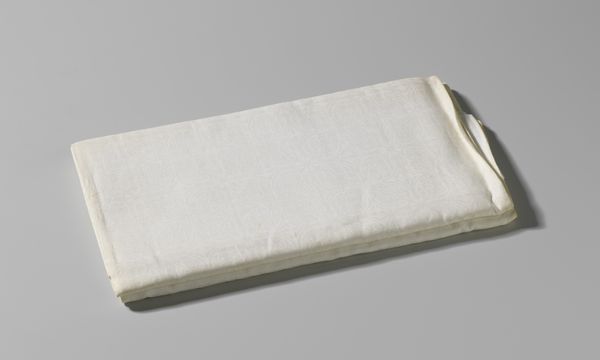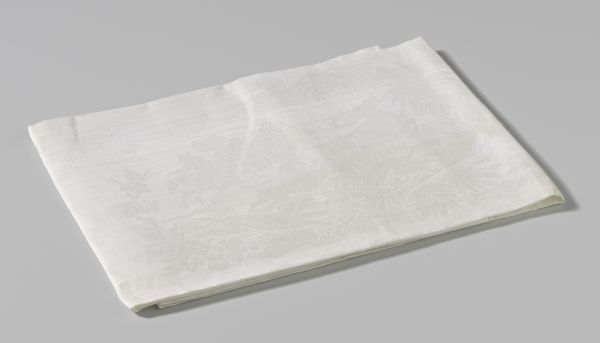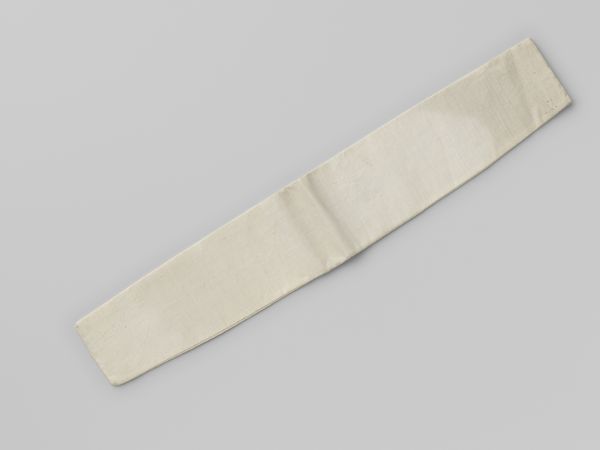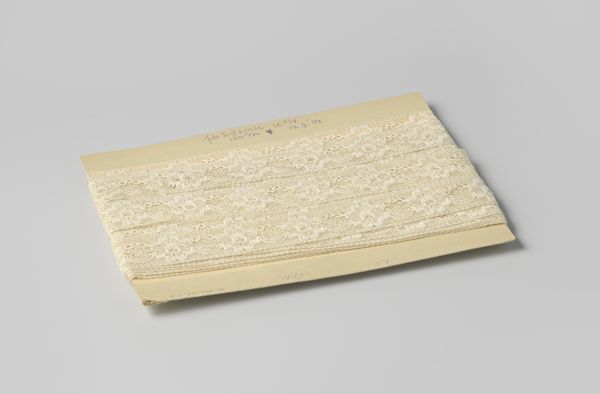
collage, textile, photography
#
product photograph merchandise
#
product shot
#
collage
#
fashion mockup
#
textile
#
photography
#
product design photgrpaphy
#
clothing photo
#
design on paper
#
clothing design
Dimensions: width 60 cm, length 22.5 cm, height 3 cm
Copyright: Rijks Museum: Open Domain
Editor: So, this is "Coupon parasolgaas, écru," made sometime between 1910 and 1940. It looks like a piece of textile, perhaps linen or cotton, in a light beige color. The way it’s photographed gives it an almost ethereal feel. What do you see in this seemingly simple image? Curator: At first glance, it may seem like just a textile swatch. But the word "coupon" in the title suggests more. It evokes a period when rationing and coupons held a strong cultural memory, especially in the first half of the 20th century. Do you think that might tie into its color? Editor: Perhaps! Écru is, after all, an undyed, natural color. So is this a representation of pre-war austerity? Or perhaps even post-war simplicity? Curator: Precisely. It might also represent the ideals of the Arts and Crafts movement, where honest materials and handcrafted goods were valued over industrial production. Can you envision someone using this material to craft an umbrella, perhaps one to provide respite and offer solace in the face of external storms? Editor: I do! I imagine the canopy filtering sunlight in the most gorgeous way, casting everything in a soft glow. Given it is a photograph of the fabric, might this itself speak to the rising fashion photography of the time and, more generally, the democratization of beauty? Curator: Absolutely. And this relates to the cultural memory tied to textiles. Historically, textiles weren't just functional; they were imbued with meaning, symbols of status, and indicators of cultural identity. Something as simple as a swatch could represent an entire lifestyle, an entire cultural aesthetic. Editor: It’s fascinating how an unassuming object, viewed through the lens of history and cultural memory, reveals a deeper narrative. Curator: Indeed. By exploring the symbolism, we've uncovered the emotional weight and cultural significance of this image and its many threads of history.
Comments
No comments
Be the first to comment and join the conversation on the ultimate creative platform.
